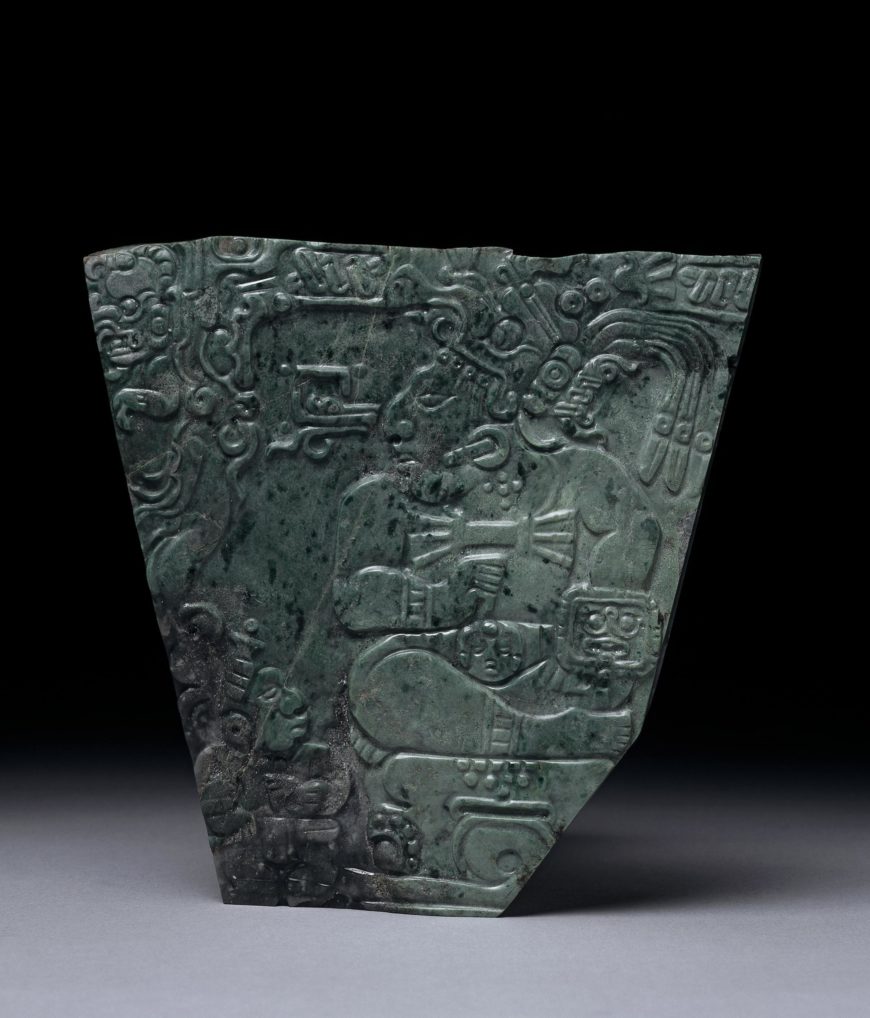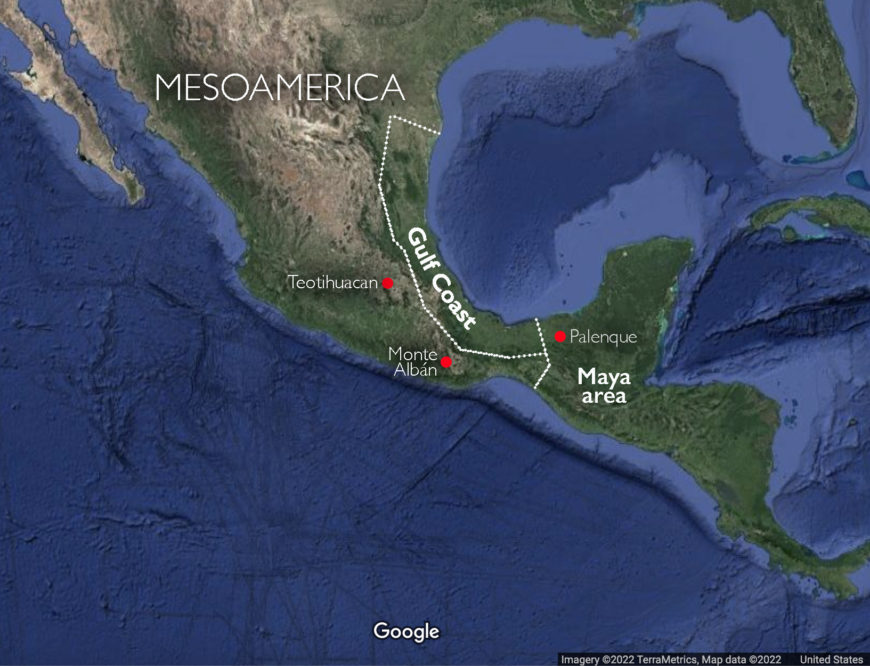
Plaque of a Maya king, c. 400–800 C.E., jadeite, found at Teotihuacan, 14 x 14 cm (© Trustees of the British Museum)
The great city of Teotihuacan thrived between 100 B.C.E. and 650 C.E. in central Mexico. Several hundred kilometers to the south, the Maya civilization was flourishing. Similarities in architecture and ceramics between Teotihuacan and the Maya area indicate that contact existed. The nature of this connection, however, is far from clear.

Plaque of a Maya king, c. 400–800 C.E., jadeite, found at Teotihuacan, 14 x 14 cm (© Trustees of the British Museum)
The scene on this plaque, carved in the so-called ‘Nebaj style’ of Guatemala, shows a Maya lord or ruler seated on a throne with a smaller figure at his feet. The lord wears earplugs, a large pectoral, armlets, wristlets, a belt with a mounted head and a zoomorphic headdress decorated with long feathers. On his left arm he carries a shield with a representation of the Jaguar God, a god of the Underworld.
Much scholarly discussion has centered around the influence of Teotihuacan on the Maya area. However, relatively little attention has been paid to Maya presence in Teotihuacan. This plaque is one of relatively few imported Maya objects ever found at Teotihuacan and indicates that interaction between the two cultures went both ways. Similar plaques have been found at other sites, including at the Cenote of Sacrifices (the Sacred Well) in Chichen Itza, where they were thrown as offerings.
The color of the plaque varies, with a darker hue on the left where the smaller figure was carved. This is due to the different chemical components of the jade and depends on its source. The main source of Maya jade is the Motagua Valley, in Guatemala.
The plaque is broken around the edges, which may indicate that it was reused.
© Trustees of the British Museum


